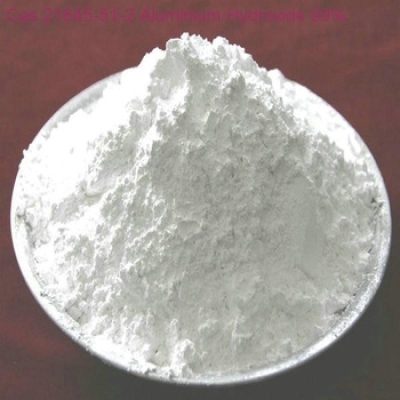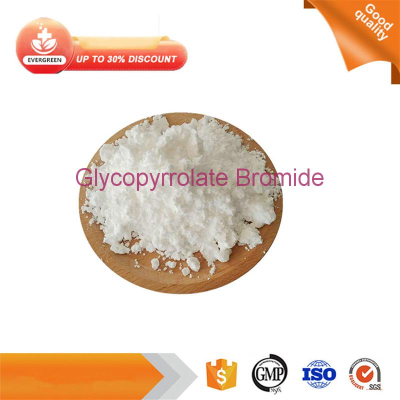-
Categories
-
Pharmaceutical Intermediates
-
Active Pharmaceutical Ingredients
-
Food Additives
- Industrial Coatings
- Agrochemicals
- Dyes and Pigments
- Surfactant
- Flavors and Fragrances
- Chemical Reagents
- Catalyst and Auxiliary
- Natural Products
- Inorganic Chemistry
-
Organic Chemistry
-
Biochemical Engineering
- Analytical Chemistry
- Cosmetic Ingredient
-
Pharmaceutical Intermediates
Promotion
ECHEMI Mall
Wholesale
Weekly Price
Exhibition
News
-
Trade Service
Editor’s note iNature is China’s largest academic official account.
It is jointly created by the doctoral team of Tsinghua University, Harvard University, Chinese Academy of Sciences and other units.
The iNature Talent Official Account is now launched, focusing on talent recruitment, academic progress, scientific research information, interested parties can Long press or scan the QR code below to follow us
.
Chronic liver diseases such as iNature non-alcoholic steatohepatitis (NASH) can inhibit liver regeneration and lead to fibrosis and cirrhosis
.
Decoding the cellular and molecular networks behind this fibrotic maladaptation may help fight NASH, which is a growing health challenge, and there is no approved therapy yet
.
On October 6, 2021, Sichuan University Cao Zhongwei, Chen Liping and Ding Yisen jointly published a research paper entitled "Targeting epigenetically maladapted vascular niche alleviates liver fibrosis in nonalcoholic steatohepatitis" in SCIENCE TRANSLATIONAL MEDICINE (IF=17.
96).
This research uses Multi-omics analysis of human cirrhosis, western diet and carbon tetrachloride (CCl4)-induced mini-pig NASH model and transgenic mice to reveal the landscape of the vascular adaptation group at the single-cell level, including endothelial cells (ECs) and TH17 Together, the cells cause liver cirrhosis
.
The study found that epigenetic-dependent hepatic vascular maladaptation enriched fibrotic TH17 cells to promote liver fibrosis in mice, minipigs and human patients with cirrhosis
.
Further analysis of humans, mini-pigs and mice showed that the crosstalk between histone deacetylase 2 (HDAC2) and DNA methyltransferase 1 (DNMT1) promotes maladaptation of liver endothelial cells, which promotes extracellular The production of angiosecretin IGFBP7 and ADAMTS1 in vesicles recruit fibrotic TH17 cells to the liver
.
The pharmacological targeting of HDAC2 and DNMT1 alleviated fibrosis in the minipig NASH model
.
In summary, this study shows that vascular adaptation of epigenetic reprogramming leads to liver fibrosis
.
Targeting vascular adaptation nodes may prevent maladaptive vascularization to promote liver regeneration in NASH
.
Non-alcoholic steatohepatitis (NASH) is associated with an increased prevalence of diabetes and metabolic syndrome, which can lead to liver fibrosis, cirrhosis and liver failure
.
If there is no effective anti-fibrosis treatment, the resulting liver fibrosis and cirrhosis are the main health burdens worldwide, which often lead to systemic complications and comorbidities
.
The liver is composed of parenchymal (hepatocytes) and non-parenchymal cells (NPC), such as stellate cells, vascular endothelial cells, and hematopoietic cells
.
The constant stress in NASH often leads to abnormal cell crosstalk and stimulates maladaptive repair and fibrosis
.
The activation of stellate cells is a key step in liver fibrosis, but how chronic stress in NASH mediates crosstalk between other liver NPCs to facilitate this step remains to be determined
.
In NPC, blood vessels and hematopoietic cells belong to the circulatory system and can directly transmit systemic stimuli, such as metabolic stress
.
They can also jointly establish a microenvironment that interacts with parenchymal cells or mesenchymal cells as niche cells
.
Although chronic damage sometimes leads to genome instability in parenchymal cells, gene mutations are rarely detected in microecological cells, such as vascular endothelial cells (EC)
.
Therefore, maladaptation of endothelial niche function during fiber formation may involve additional epigenetic regulation, including histone and DNA modifications
.
The blood vessel EC lining the blood vessel is the main component of the liver NPC
.
The blood supply to the liver is distributed by the sinusoidal vessels between the hepatic veins, arteries and portal veins
.
The sinusoidal vascular system is lined with a layer of perforated endothelial cells that express CLEC4G and OIT3, while large blood vessel endothelial cells preferentially express CD34
.
Therefore, liver endothelial cells in different anatomical locations show special morphological and phenotypic markers, with "sinusoidal-macroscopic" vascular hierarchy and intra-organ classification
.
In the process of organ repair, vascular endothelial cells also produce a large number of mediators to regulate the communication between hematopoietic, mesenchymal and parenchymal cells
.
Abnormal changes in sinusoidal ECs (SECs), such as capillary vascularization, are related to liver fibrosis
.
However, the functional contribution of specific liver endothelial cell subpopulations to the pathology of human cirrhosis or NASH has not been systematically described in complementary clinical and preclinical models at the single-cell level
.
The study used multi-omics analysis of human cirrhosis, Western diet and carbon tetrachloride (CCl4)-induced mini-pig NASH model and transgenic mice to reveal the landscape of the vascular adaptation group at the single-cell level, in which endothelial cells (ECs) ) And TH17 cells together cause liver cirrhosis
.
The study found that epigenetic-dependent hepatic vascular maladaptation enriches fibrotic TH17 cells to promote liver fibrosis in mice, mini-pigs and human patients with liver cirrhosis
.
Further analysis of humans, mini-pigs and mice showed that the crosstalk between histone deacetylase 2 (HDAC2) and DNA methyltransferase 1 (DNMT1) promotes maladaptation of liver endothelial cells, which promotes extracellular The production of angiosecretin IGFBP7 and ADAMTS1 in vesicles recruit fibrotic TH17 cells to the liver
.
The pharmacological targeting of HDAC2 and DNMT1 alleviated fibrosis in the minipig NASH model
.
In summary, this study shows that vascular adaptation of epigenetic reprogramming leads to liver fibrosis
.
Targeting vascular adaptation nodes may prevent maladaptive vascularization to promote liver regeneration in NASH
.
Reference message: https://
It is jointly created by the doctoral team of Tsinghua University, Harvard University, Chinese Academy of Sciences and other units.
The iNature Talent Official Account is now launched, focusing on talent recruitment, academic progress, scientific research information, interested parties can Long press or scan the QR code below to follow us
.
Chronic liver diseases such as iNature non-alcoholic steatohepatitis (NASH) can inhibit liver regeneration and lead to fibrosis and cirrhosis
.
Decoding the cellular and molecular networks behind this fibrotic maladaptation may help fight NASH, which is a growing health challenge, and there is no approved therapy yet
.
On October 6, 2021, Sichuan University Cao Zhongwei, Chen Liping and Ding Yisen jointly published a research paper entitled "Targeting epigenetically maladapted vascular niche alleviates liver fibrosis in nonalcoholic steatohepatitis" in SCIENCE TRANSLATIONAL MEDICINE (IF=17.
96).
This research uses Multi-omics analysis of human cirrhosis, western diet and carbon tetrachloride (CCl4)-induced mini-pig NASH model and transgenic mice to reveal the landscape of the vascular adaptation group at the single-cell level, including endothelial cells (ECs) and TH17 Together, the cells cause liver cirrhosis
.
The study found that epigenetic-dependent hepatic vascular maladaptation enriched fibrotic TH17 cells to promote liver fibrosis in mice, minipigs and human patients with cirrhosis
.
Further analysis of humans, mini-pigs and mice showed that the crosstalk between histone deacetylase 2 (HDAC2) and DNA methyltransferase 1 (DNMT1) promotes maladaptation of liver endothelial cells, which promotes extracellular The production of angiosecretin IGFBP7 and ADAMTS1 in vesicles recruit fibrotic TH17 cells to the liver
.
The pharmacological targeting of HDAC2 and DNMT1 alleviated fibrosis in the minipig NASH model
.
In summary, this study shows that vascular adaptation of epigenetic reprogramming leads to liver fibrosis
.
Targeting vascular adaptation nodes may prevent maladaptive vascularization to promote liver regeneration in NASH
.
Non-alcoholic steatohepatitis (NASH) is associated with an increased prevalence of diabetes and metabolic syndrome, which can lead to liver fibrosis, cirrhosis and liver failure
.
If there is no effective anti-fibrosis treatment, the resulting liver fibrosis and cirrhosis are the main health burdens worldwide, which often lead to systemic complications and comorbidities
.
The liver is composed of parenchymal (hepatocytes) and non-parenchymal cells (NPC), such as stellate cells, vascular endothelial cells, and hematopoietic cells
.
The constant stress in NASH often leads to abnormal cell crosstalk and stimulates maladaptive repair and fibrosis
.
The activation of stellate cells is a key step in liver fibrosis, but how chronic stress in NASH mediates crosstalk between other liver NPCs to facilitate this step remains to be determined
.
In NPC, blood vessels and hematopoietic cells belong to the circulatory system and can directly transmit systemic stimuli, such as metabolic stress
.
They can also jointly establish a microenvironment that interacts with parenchymal cells or mesenchymal cells as niche cells
.
Although chronic damage sometimes leads to genome instability in parenchymal cells, gene mutations are rarely detected in microecological cells, such as vascular endothelial cells (EC)
.
Therefore, maladaptation of endothelial niche function during fiber formation may involve additional epigenetic regulation, including histone and DNA modifications
.
The blood vessel EC lining the blood vessel is the main component of the liver NPC
.
The blood supply to the liver is distributed by the sinusoidal vessels between the hepatic veins, arteries and portal veins
.
The sinusoidal vascular system is lined with a layer of perforated endothelial cells that express CLEC4G and OIT3, while large blood vessel endothelial cells preferentially express CD34
.
Therefore, liver endothelial cells in different anatomical locations show special morphological and phenotypic markers, with "sinusoidal-macroscopic" vascular hierarchy and intra-organ classification
.
In the process of organ repair, vascular endothelial cells also produce a large number of mediators to regulate the communication between hematopoietic, mesenchymal and parenchymal cells
.
Abnormal changes in sinusoidal ECs (SECs), such as capillary vascularization, are related to liver fibrosis
.
However, the functional contribution of specific liver endothelial cell subpopulations to the pathology of human cirrhosis or NASH has not been systematically described in complementary clinical and preclinical models at the single-cell level
.
The study used multi-omics analysis of human cirrhosis, Western diet and carbon tetrachloride (CCl4)-induced mini-pig NASH model and transgenic mice to reveal the landscape of the vascular adaptation group at the single-cell level, in which endothelial cells (ECs) ) And TH17 cells together cause liver cirrhosis
.
The study found that epigenetic-dependent hepatic vascular maladaptation enriches fibrotic TH17 cells to promote liver fibrosis in mice, mini-pigs and human patients with liver cirrhosis
.
Further analysis of humans, mini-pigs and mice showed that the crosstalk between histone deacetylase 2 (HDAC2) and DNA methyltransferase 1 (DNMT1) promotes maladaptation of liver endothelial cells, which promotes extracellular The production of angiosecretin IGFBP7 and ADAMTS1 in vesicles recruit fibrotic TH17 cells to the liver
.
The pharmacological targeting of HDAC2 and DNMT1 alleviated fibrosis in the minipig NASH model
.
In summary, this study shows that vascular adaptation of epigenetic reprogramming leads to liver fibrosis
.
Targeting vascular adaptation nodes may prevent maladaptive vascularization to promote liver regeneration in NASH
.
Reference message: https://







